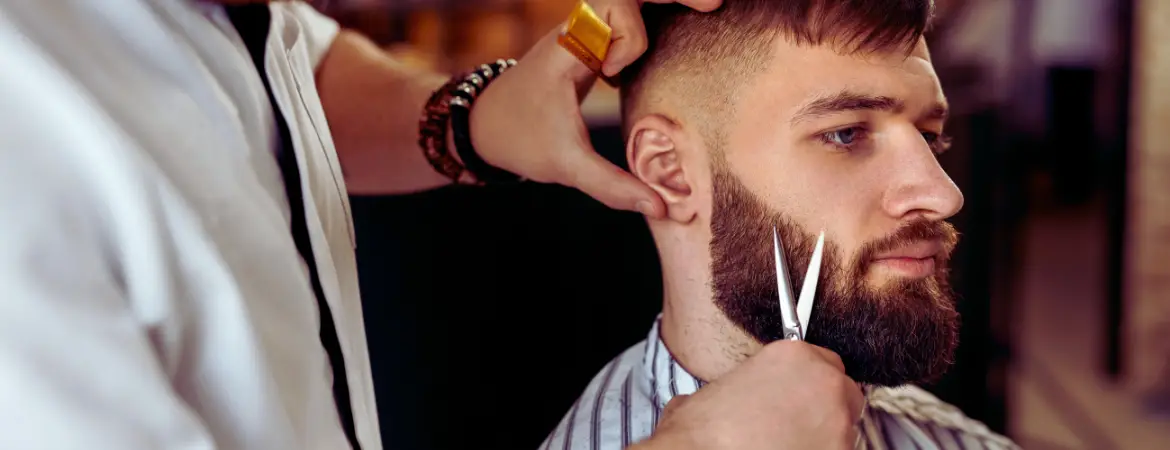
Dealing with patchy beard growth can be a frustrating experience for many men. It’s a common issue that can undermine confidence and leave individuals feeling self-conscious about their appearance. However, it’s important to recognize that there are a variety of strategies and solutions available to address this challenge, including considering a hair transplant in Turkey. From understanding the underlying causes of uneven growth to adopting specific grooming techniques and exploring targeted treatments, men can take proactive steps to enhance their beard’s appearance. This introduction aims to shed light on practical tips and solutions for those navigating the complexities of patchy beard growth, offering hope and guidance for achieving a fuller, more uniform beard.
Table of Contents
ToggleUnderstanding the Causes of Patchy Beard Growth
Having a thick and well-groomed beard is a sign of masculinity and confidence. Unfortunately, many men struggle with patchy beard growth, which can be frustrating and impact their self-esteem. Understanding the causes of patchy beard growth is essential before seeking solutions. In this section, we will explore the genetic factors, hormonal influences, and the impact of lifestyle and nutrition on facial hair growth.
Genetic Factors in Beard Patchiness

Genetics play a significant role in determining the growth patterns of facial hair. Some men are genetically predisposed to have patchy beard growth due to the distribution of hair follicles on their face. Certain genes control the density, thickness, and length of facial hair, and variations in these genes can result in patchiness and bald spots. It’s important to remember that genetics can’t be changed, but understanding their role can help manage expectations and explore other solutions.
Hormonal Influences on Facial Hair
Hormones, particularly testosterone, have a profound impact on facial hair growth. Testosterone is responsible for stimulating the growth of hair follicles on the face, thus promoting the development of a beard. However, imbalances in hormone levels can affect the thickness and distribution of facial hair, leading to patchiness. Hormonal imbalances can occur naturally or be influenced by factors such as aging, stress, and certain medical conditions.
Impact of Lifestyle and Nutrition
While genetics and hormones play a significant role in beard growth, lifestyle and nutrition also have an impact. Poor lifestyle choices, such as excessive stress, smoking, and a lack of exercise, can negatively affect hair health and growth. Additionally, a nutrient-deficient diet lacking in essential vitamins and minerals can contribute to weak and patchy facial hair.
The Role of Beard Care Products
When it comes to achieving a fuller, well-groomed beard, the role of beard care products cannot be underestimated. These products play a vital role in nourishing and moisturizing the facial hair, reducing patchy beard growth, and promoting healthier growth. With a wide variety of beard care products available, including beard oil, balm, shampoo, and conditioner, it’s essential to understand their benefits and how to select and use them effectively.

- Beard Oil: Beard oil is a staple in any beard care routine. It is formulated with a blend of natural oils that hydrate the skin and hair follicles, promoting beard growth and minimizing itchiness. Additionally, beard oil helps to soften and tame unruly facial hair, making it more manageable
- Beard Balm: For those looking for a product with additional hold, beard balm is an excellent choice. It contains a combination of oils and butters that provide nourishment while offering a light styling effect. Beard balm helps shape the beard, giving it a neater and more polished appearance
- Shampoo and Conditioner: Just like the hair on your head, your beard also requires regular cleansing and conditioning. Beard shampoo helps remove dirt, debris, and excess oils, while beard conditioner hydrates and softens the hair, making it easier to manage. Using a dedicated shampoo and conditioner for your beard will ensure optimal cleanliness and freshness.
When selecting beard care products, it’s essential to consider your specific needs and preferences regarding patchy beard growth. Consider factors such as the scent, ingredients, and the consistency of the product. It’s also important to follow the instructions provided by the manufacturer for optimal results.
Medical Treatments and Procedures
For individuals with patchy beard growth who have exhausted other options, medical treatments and procedures can offer a potential solution. One popular choice is a beard transplant, a surgical procedure that involves transplanting hair follicles from other parts of the body to the beard area.
During a beard transplant, a qualified surgeon carefully extracts individual hair follicles from donor sites, such as the back of the scalp or the body, and implants them into the patchy areas of the beard. This procedure can yield natural-looking results, with the transplanted hair eventually growing and blending in with the existing facial hair.
Success rates for beard transplants are generally high, with many individuals experiencing significant improvement in beard density and coverage. However, it’s important to note that individual results may vary based on factors such as the extent of patchiness, the quality of the donor hair, and the skill of the surgeon. Consulting with a medical professional specializing in facial hair restoration is crucial to determine whether a beard transplant is the right option for your specific needs.



